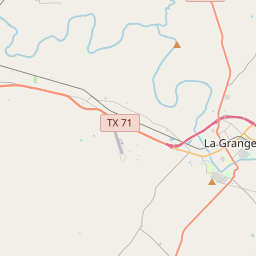Beer Office and Bottling Company
Historical marker location:






F. W. Grassmeyer commissioned German-Texan stonemasons to construct this Italianate style commercial building between 1856 and 1859. The structure served as a hotel until 1893, when German immigrant Fritz Presun purchased it as a regional sales office for large American breweries. In 1897 Presun added a bottling operation, The Crown Soda Factory. His son Henry continued the business and also sold oil and gas here.
Recorded Texas Historic Landmark-1983
As one of the most visible programs of the Texas Historical Commission (THC), historical markers commemorate diverse topics in Texas history, including: the history and architecture of houses, commercial and public buildings, religious congregations, and military sites; events that changed the course of local and state history; and individuals who have made lasting contributions to the state, community organizations, and businesses.
In the late 19th century, Texas became known for its cattle drives, in which cowboys would move herds of cattle from Texas to railheads in Kansas and other northern states. The cattle drives were dangerous and difficult work, but they played a key role in the development of the American cattle industry.
The establishment of Anglo-American settlements in Fayette County started in the 1820s under Stephen F. Austin's colony. The town of La Grange, which would become the county seat, was founded in 1826 and named after the ancestral home of General Lafayette. Over the next few decades, more pioneers arrived, attracted by the fertile soil and opportunities for farming and ranching. German immigrants, in particular, played a significant role in the county's development, establishing thriving communities and introducing their agricultural practices.
During the mid-19th century, Fayette County became embroiled in the turmoil of the Texas Revolution and the Civil War. The Battle of Fayetteville, fought in 1836, marked a significant event in the struggle for Texas independence. Confederate soldiers from Fayette County fought in various battles during the Civil War, including the Battle of Galveston and the Battle of Sabine Pass.
In the late 19th and early 20th centuries, Fayette County experienced economic growth and cultural diversification. Railroads connected the county to larger markets, stimulating trade and commerce. The discovery of oil and gas reserves further bolstered the local economy. Today, Fayette County is known for its agricultural industry, with crops like cotton and corn, as well as cattle ranching. It also attracts tourists with its historical sites, including the Monument Hill and Kreische Brewery State Historic Sites, which commemorate important moments in the county's history.
Fayette County Timeline
This timeline provides a condensed summary of the historical journey of Fayette County, Texas.
- 1837 – Fayette County is established as one of the original counties of the Republic of Texas.
- 1838 – The permanent county seat is established in La Grange.
- 1861-1865 – Fayette County residents actively participate in the Civil War.
- 1873 – The railroad reaches Fayette County, spurring economic growth.
- 1901 – The first oil well is drilled in the county, leading to the discovery of the West Point Oil Field.
- 1905 – The monumental Fayette County Courthouse is built.
- 1950s-1970s – Fayette County experiences an agricultural boom due to the construction of the Fayette Power Project and Fayette Nuclear Plant.
- 1998 – Fayette County celebrates its 150th anniversary.
- 2011 – The historic town square in La Grange is added to the National Register of Historic Places.